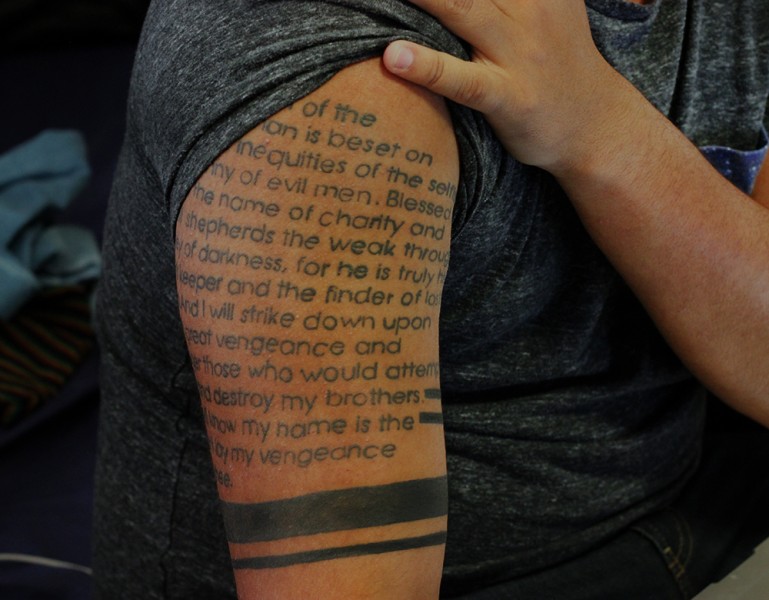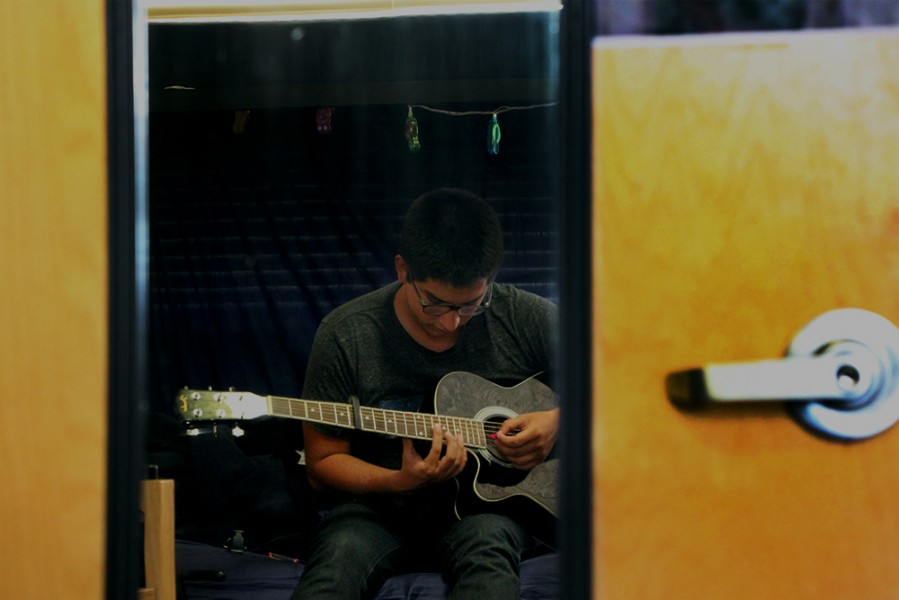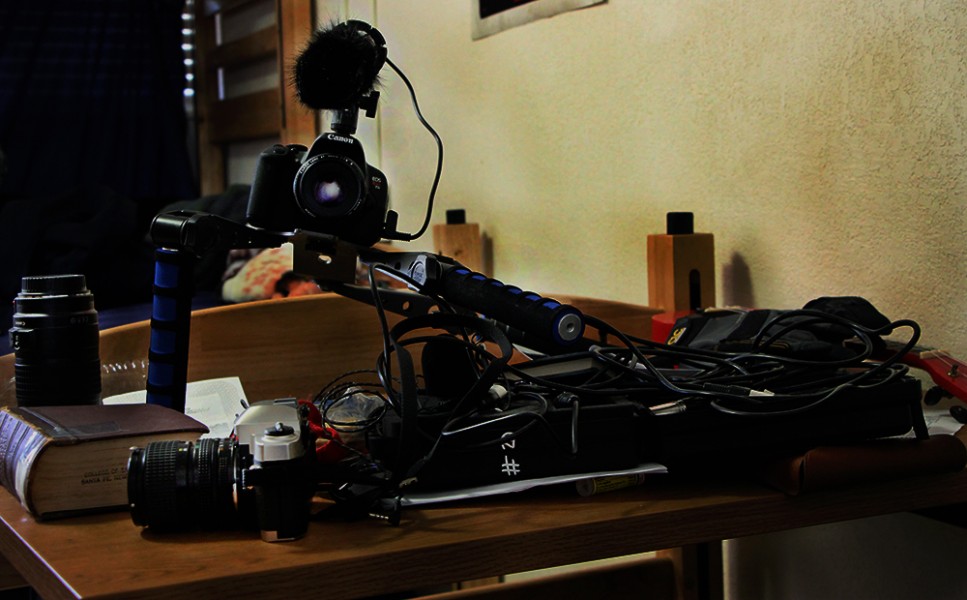Tags
Related Posts
Share This
Q/A w/ Alvie Hurt
Alvie Hurt was was born in Peru and lived there for seven years before moving to El Salvador, where he lived for two years. Hurt then moved to Mexico where he lived for almost 10 years, before moving to Vancouver, Canada for one year. Now, finally, he is here in Santa Fe studying film at SFUAD.
Jackalope Magazine: Why did you move so often?
Alvie Hurt: It was because of my father’s job; he used to work for Unilever, and later on he started working for Laureate. His jobs required him to move often and we always went with him.
JM: How did moving around make you feel?
AH: At first it was difficult, but eventually you get used to it. Moving from Mexico to Vancouver was the hardest time because the culture shock was huge. I was living in Mexico and then I was living in Canada, which is like Perfectville. I feel that at a certain degree you become colder with people. But at the same time I love meeting new people.
JM: When did you decide to study film?
AH: I always had a passion for art related things. One day I started watching movies, in a more serious way. My philosophy in live has never been, ‘You have to get a job and make money,’ I’d rather be poor and happy than rich and sad. I want to do something I feel truly happy about. I love telling stories and that is what I’m doing here
JM: Do you think moving so often had something to do with you choosing film?
AH: Definitely. If you had asked me a year ago where I would be, Santa Fe would probably be the last place on my list. You really never know what you are going to get from life; this is where I come from while making films. I don’t feel like I tell the stories that people usually tell, I feel like I get out of everyone’s comfort zone.
JM: What do you mean by get people out of their comfort zone?
AH: In film school we are used to certain stories and ways to tell them. I don’t like telling stories that have been told a thousand times before. When people see it they think it’s cool and I feel that in this school there are people who say, ‘This guy is kind of crazy, I will work with him because he has something to say.’
JM: How do you choose your stories and situations?
AH: I do use a lot of personal stories, and conversations that I find interesting. But there are other times when I take a whole different approach and I do things that I have never done before. Now, for example, I’m shooting a horror film. I have never done a horror film in my life. The reason I’m doing this is because I want to learn from it.
JM: Have you ever been inspired by social situations?
AH: The Mexican drug lords short I made was inspired by a ridiculous news I read on the internet about the drug war in Mexico, and I wanted to make fun of it. This was very special because it was a huge production and I also had a little budget. All the exchange students from Mexico, we wanted to do something that involved all of us, so it was pretty interesting.
JM: What are your filming methods?
AH: I don’t have the usual approach of giving directions; I make the actors feel what they are supposed to feel. For example, If the script says that the you have to be scared in the middle of the field, I’m going to take you with me to the middle of the field, I’m going to tell you scary stories and I’m going to put blood everywhere and its just going to be me with the camera and me telling you horrible things so you can cry and get scared and that is what I will film and use. I’m not one of using huge productions, I prefer shooting everything guerrilla. This way it is more personal to me.
JM: Define guerrilla
AH: Usually in a set you have a lot of people working with you, and I don’t like that. I think that right now, as a student it is overwhelming. Guerilla is literally just the camera, a microphone and me. I write, I direct, I edit. This way it is more personal and I feel like it is more successful for me and for the people I work with, especially at the level we are at right now.
JM: When you put actors in these situations do you let them know before?
AH: No, they have no idea. But I do work a lot with them before the shootings. I make them get inside of the character. And then once we are on set I tell them to ignore the camera completely, ‘This is not a set and this is happening to you’. The best example I can use right now is this horror movie I’m doing.
JM: Does this always work?
AH: Sometimes it works beautifully and other times it just goes the other direction. It has happened before where an actor doesn’t understand where I’m trying to go to, so I ask them ‘What would you do?’ If things are not working, it’s not real and if it’s not real no one is going to believe it. For me, you are successful when you manage to portray reality through art.
JM: Is a close relationship with your actors is important to you?
AH: Not only actors but also everyone else who is working with me. I have to know the people I have to work with. This horror movie I’m doing right now is in Spanish because all the actors are Mexican and I don’t want them to feel uncomfortable speaking in another language.
JM: Not many people explore the bilingual quality this school has…
AH: Yes, that is where I want to go, not necessarily making movies that represent Mexico, or El Salvador, but finding a way to explore this more with American cinema. We are all from somewhere.











 Jackalope Magazine is the student magazine of Santa Fe University of Art and Design. Building on the interdisciplinary nature of our education, we aim to showcase the talent of our university and character of our city.
Jackalope Magazine is the student magazine of Santa Fe University of Art and Design. Building on the interdisciplinary nature of our education, we aim to showcase the talent of our university and character of our city.
Estoy muy orgullosa de ti. Te quiero mucho……..Gracias, Tu Mami
Alvaro! qué lindo!! te felicito!! la próxima vez aque te vea me firmas un autógrafo!!!! te mando un besote!
tu tía brezzia
Mila; felicitaciones para Alvaro y por supuesto para los papis, deben sentirse orgullosisimos! y me imagino que la abuela no se queda atrás. Cariños, Gladys
Hola Alvaro te felicito eres un orgullo para tus padres y para todos
los latinos, que Dios te bendiga. (soy amiga de tu mama)
Felicidades a los papas orgullosos y por supuesto a ti por tus logros un fuerte abrazo
Te felicito Alvaro un orgullo para tus padres y para todos los latinos pronto te veremos en la pantalla grande, soy amiga de tu
mama
Alvarito
Felicitaciones!!!!! lo máximo!!!
Un abrazo para esos padres orgullos que “deben estar necesitando babero”
Tu tía Sairah
Felicidades Álvaro! Un orgullo para tu familia saludos desde México
Querido Alvaro, enhorabuena, no sabia que esta es la Profesion que elegiste; me representa una grata sorpresa,por supuesto que te auguro mucho exito, porque se que eres de los chicos que se “toman las cosas en serio” y porque además se ve que te gusta, tus respuestas son interesantes. Ahh y no sabes como me alegra tener fotos tuyas muy bonitas (serán primicias jaja) todas aquellas que tomamos en el maravilloso viaje con tus papas y amigos a Brasil (luego me las firmas porfa) te mando un muy Fuerte Abrazo!!
Alvaro,
Muchas felicidades y muchos éxitos futuros!!!
Un fuerte abrazo para ti y muchos cariños para tus papás y tu abuela!
Alvarito,
Muchas felicidades y mucho éxitos futuros!!!
Un abrazo y todo mi cariño,